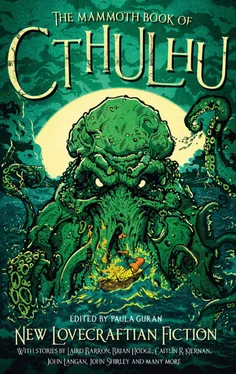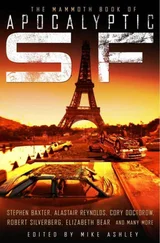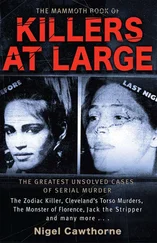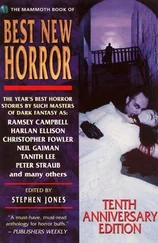Two scurried out from under the server rack. One spoke with the slightly Chinese accent Dr. Randall Wong affected, “Xuthltan!” Another hissed.
Then they rushed him.
It was quick, but not quick enough.
For
Matthew Carpenter, super-fan
Nadia Bulkinwrites scary stories about the scary world we live in — and sports (metaphorically and in reality) are definitely part of our world. She became a University of Nebraska Cornhusker fan at the age of eleven, but now also cheers for the Washington Nationals (baseball) and Wizards (basketball). When not becoming irrationally angry at sporting events outside of her control, she tends her garden of student debt sowed by two political science degrees. She has written other Lovecraftian stories set in Indonesia ( Lovecraft’s Monsters , Sword & Mythos ) and Nebraska ( Letters to Lovecraft, She Walks in Shadows ). She apologizes deeply to the athletes who inspired characters in this story.
The genesis of her story lies in “the human cults that worship Lovecraft’s monsters, probably for the same reasons that I’m fascinated by real-world suicide cults: why would someone sign up to bring about the end of the world? In this story, I was working on the assumption that some cults are more inviting to the Outer Gods than others. I wanted to chart a history of one such cult that was ripe for the picking: the Church of the Holy Star, obsessed with the idea that absorbing ‘superhuman’ athletes will enable them to overcome what they see as the fragile weakness of ordinary humanity. Choosing the athletic angle was easy. Saturday in my hometown was the week’s true holy day, with eighty thousand people making the pilgrimage to the stadium for three hours of furious communal worship. Even now, just thinking about game day gives me goosebumps.”
I Believe That We Will Win
When the 1969 Stairway to Paradise Campaign became the Great Famine of 1970, the landlocked city of Jackson’s Tomb was hit particularly hard. An estimated 45 per cent of the population of Jackson’s Tomb died of starvation and violence before a new population equilibrium was established and the national economy recovered. Riots were suppressed with lethal force until the police force discarded their badges and joined the rioters, at which point only the Tomb’s wealthiest citizens could afford to feed or flee. It was in this dark time that Sasha Spell, the “Perfect Ten,” star of the 1970 Global Artistic Gymnastic Championships, ignited the dormant passion within her father’s Church of the Holy Star.
The Famine brought Sasha Spell home after it forced the nation to withdraw from the 1970 Summer Olympics, and killed her mother. Devout from a young age, Sasha spent up to seven hours a day in solemn prayer. She burned her palms with candles, eating only wax and scar tissue, to show her sleeping god how badly her people were suffering. She finally heard the answer as her father gave a sermon about the holy bread and wine of communion. Unexpectedly struck by the sublime, Sasha approached the altar, declared herself “food for my people,” and sacrificed her perfect tiny body with a Swiss Army knife.
And so Sasha Spell became the first athlete to climb that highest rung of divinity and become a true Champion. Her father, Reverend Orrin Spell, was also struck by the sublime: he demanded his congregants accept his daughter’s noble sacrifice and began to offer her to them piece by piece. Awestruck by Sasha’s purity, the congregants drank of her blood and ate of her flesh, and lo! — they were transformed; rewarded for their piousness and rescued from their human frailty. Raised up by Sasha’s well-disciplined muscles and fierce lioness heart, the Church of the Holy Star became stronger and healthier and so survived the Famine. The sole exception was one bookkeeper who doubted the righteousness of St. Sasha’s sacrifice and starved in his attic two months later, weak and shriveled like all others in Jackson’s Tomb who were unblessed by the Champion, the warrior-angel made flesh.
As the nation got its feet back underneath it and rediscovered its collective interest in sporting — and resumed sending athletes to the Olympic Games — the Church of the Holy Star dug its way out of the ruins of Jackson’s Tomb and entered a world filled with the seedlings of Champions. The Church understood that raw talent needed to be sculpted, funded, positioned. Members became recruiters, elders became boosters, and babies born into the Church were scoured head to toe for talent.
During this period, redheaded Maya Dommel exerted a high degree of influence over the Church of the Holy Star. She was its top recruiter, and had used her unusually persuasive personality to marry an aged industrial baron who loved what he called “sportsball.” The Rising Star Foundation was her brainchild, financed by the baron’s fortune. It sponsored more athletes at the 1986 Olympics than any other organization; at its heyday, Maya Dommel and the Foundation were even invited to dine with President John Jacob Wilder in honor of their “steadfast commitment to elevating the health and spirit of our youth through sport.” The Church launched the careers of a hundred young Champions who returned like boomerangs once glory wore thin and only the long dark slouch into obscurity lay ahead, to give their bodies to splendor while they still could. The Church also propped up the dreams of a thousand others who were not quite Perfect Tens , but could still sustain the growing ranks of the congregation.
Most of those attracted to the Church of the Holy Star were the unfortunate, those who sought salvation. They would hear of the Church through friends, neighbors, and family who had joined and grown strong and beautiful. To protect the Church, they were never informed of the community’s holy rites until they had signed the paperwork and entered the sanctum. But when they laid eyes on the bronze statue of Saint Sasha the Perfect Ten, almost every newcomer was struck by the sublime, and quickly swallowed their spoonful of Champion blood. The exceptions — weaklings who through some deep fault of their character would rather embrace death than life — were immediately delivered unto the pitiful fate that they had chosen. The Church of the Holy Star provides only what one can handle.
One of Maya Dommel’s rising stars was Zola Golding, born to a pair of young alley cats who had found the Church while in need of a firm guiding hand. Their devotion to the Church and its mission was derived from a life spent in hunger. Zola had been reared on the Church diet, weaning off her mother’s milk straight to the blood of baseball pitcher Matt Frankberg, whose 120-miles-per-hour fastball might have won him the World Series, if only he were on a better team. Thus Zola showed a gift for speed early, and her parents delighted at the opportunity to repay the Church for its generosity.
Zola Golding received everything that a young runner could need to transcend into a Champion. The best shoes, the best singlets, access to the best training facilities and provision of the best meals — Zola was always among the first to dine on any Champion, and she was served her portion on a porcelain plate, not the great metal trough. She was excused from public schooling and gifted with state-of-the-edge electronics. She was also trained by the best coach available, a man who had spun several gold medals out of impermanent and faulty human flesh.
Early signs of Zola’s selfishness were misread by Maya Dommel as ambition. Zola was sure that her new coach could unlock hidden reservoirs of agility, and insisted that her sacrifice be delayed until she was at her physical peak. She wanted to wait for the next Olympics; she wanted to see just how much glory she could attain. This at a time when the congregation, including her parents, was thirsting for the essence of a Champion! But the Founding Father, Reverend Orrin Spell, was reminded of his daughter’s indomitable spirit and her own unfairly-aborted Olympic bid, and gave Zola the blessing to train for the 1990 Olympics.
Читать дальше












